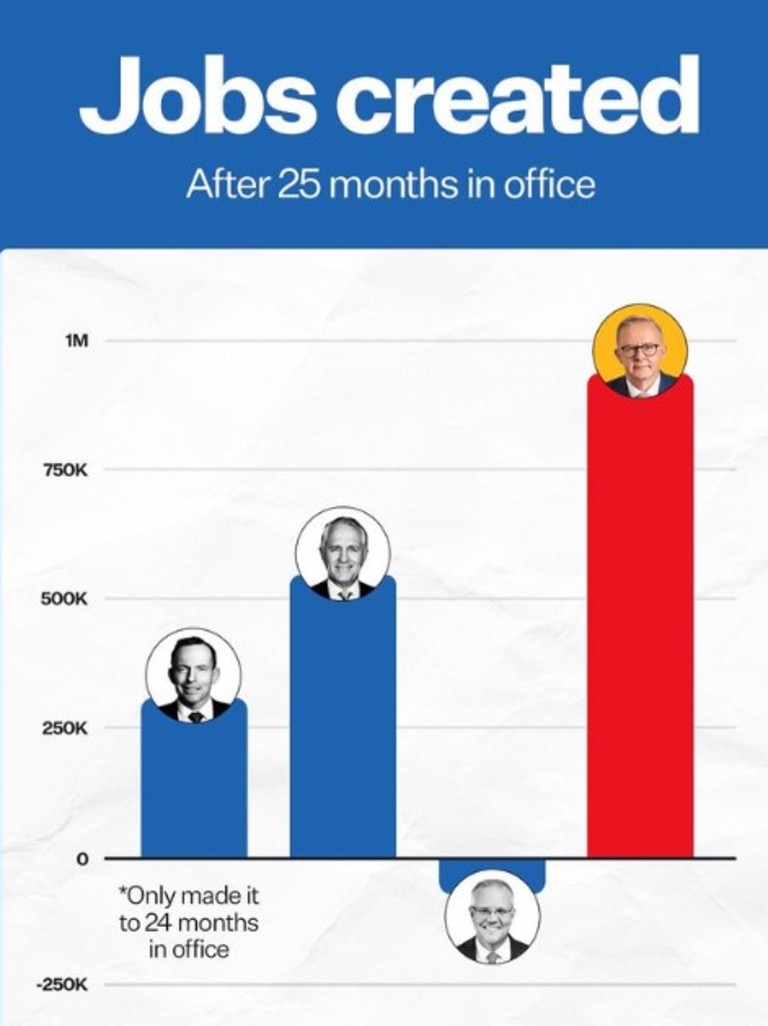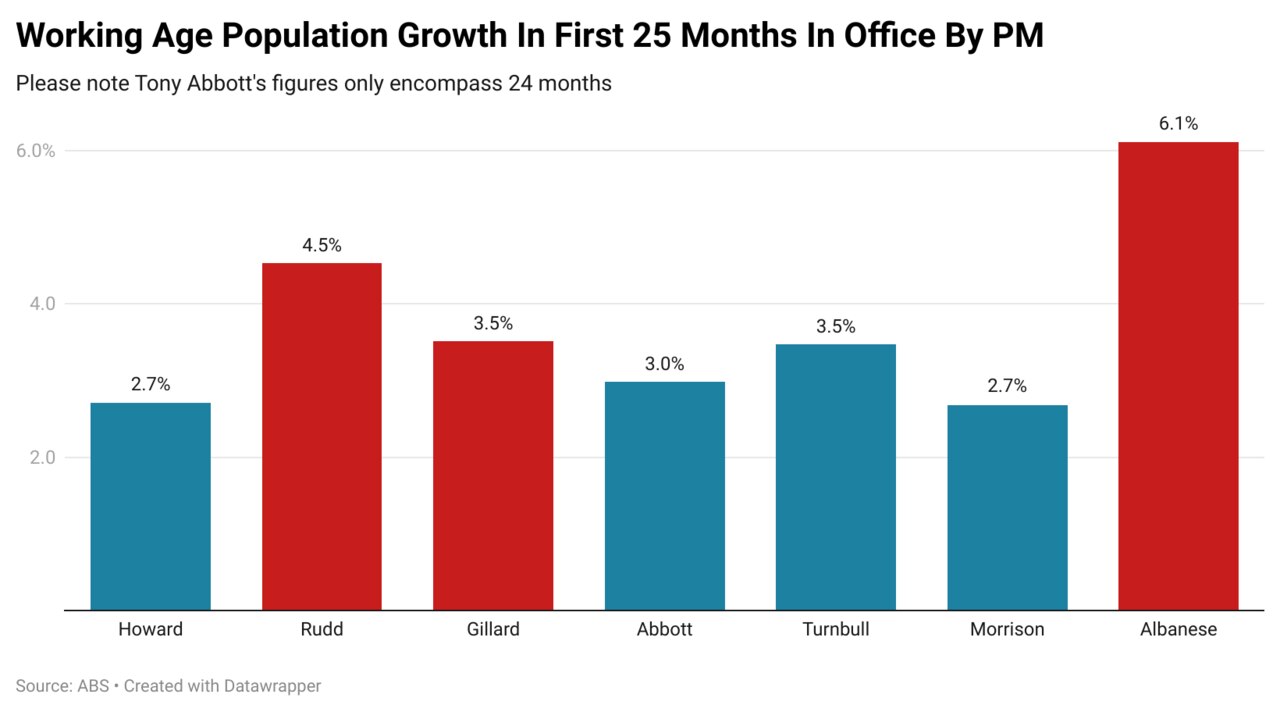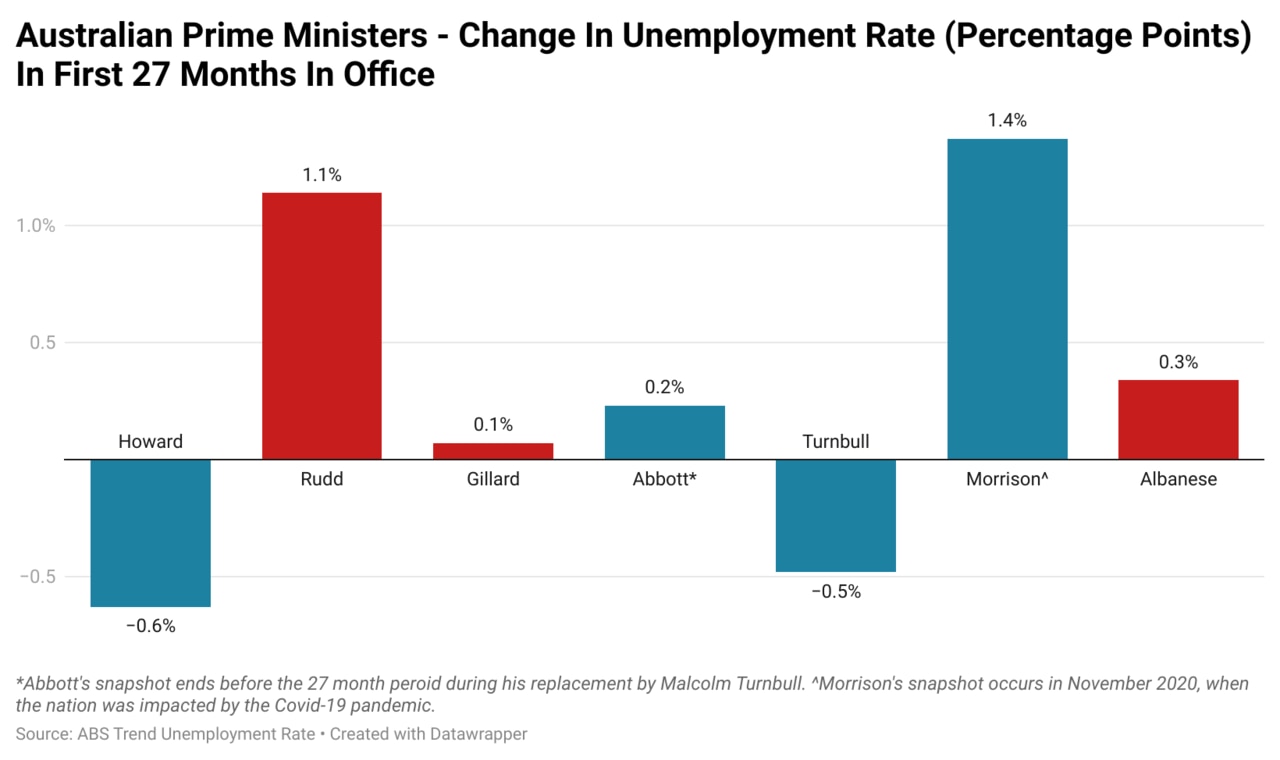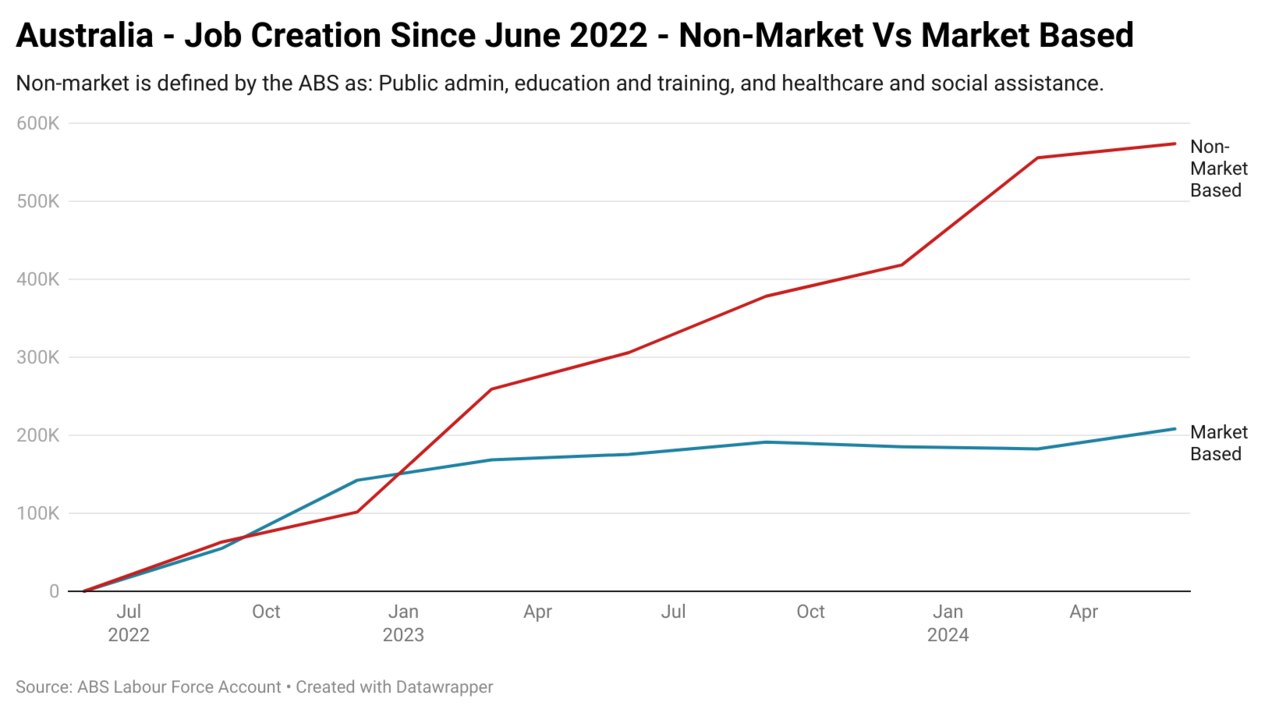Big jobs question facing the Anthony Albanese government
The PM recently boasted about a record breaking achievement – however, there was one crucial detail missing that changes everything.
When Prime Minister Anthony Albanese posted a chart on X (formerly Twitter) recently detailing the level of jobs growth seen under the governments of the last four PMs at this stage in their tenure (25 months in), it raised an interesting question.
How does the Albanese government compare with its predecessors when it comes to the labour market?
While the Prime Minister’s chart makes for a nice piece of political grandstanding, there is a great deal more to it.
Since becoming PM, the expansion of the working age population and by extension the labour force has reached its highest level on record, necessitating an extremely high level of jobs growth just for the unemployment rate to stand still.
In order to get a more concrete read on the state of the labour market and the lot held by Australian workers, we’ll be looking at the performance of three metrics under the Albanese government and its predecessors over the last 30 years at this stage in their respective tenure. Those three metrics are jobs growth relative to the expansion of the overall labour force, unemployment relative to the level seen when entering office and inflation adjusted wages growth.


Relative jobs growth
The chart shared by the Prime Minister showed that since the Albanese government came to power, the economy had created 928,000 jobs.
This total is far more than any of Mr Albanese’s predecessors, but this is for a rather obvious reason – no other government has seen the working age population expand to the degree that the Albanese government has.
As of the latest figures from the Australian Bureau of Statistics (ABS), 978,000 jobs have been created since the Albanese government took office in May 2022.
In the 25 months since, the working age population has expanded by 1,293,000 people, or 6.1 per cent. This is almost double the average rate of working age population growth seen under the leadership of six of his predecessors going back almost 30 years – 6.1 per cent versus 3.3 per cent.

Unemployment rate
When the Albanese government entered office, it inherited the lowest unemployment rate for a newly-minted government since the current ABS unemployment series began in 1978, a figure of 3.9 per cent.
Since then it bottomed out to the lowest level in almost 50 years at a reading of 3.5 per cent, before rising to its current level of 4.1 per cent.
On average in the first 27 months of the tenure of each Prime Minister since John Howard, unemployment rises by 0.28 percentage points. For Mr Albanese, it has risen by 0.34 percentage points, so roughly in line with the broader average over the last three decades.

Under the bonnet
While the economy has recorded a highly impressive level of headline jobs growth, when the figures are examined more closely, the shine begins to at least somewhat come off the government’s record.
According to figures from the ABS Labour Force Account, from the end of Q2 2022 to the end of Q2 2024, 782,000 jobs were created. Of those, 573,800 were in what the ABS defines as non-market-based industries – health care and social assistance, education and training and public administration and safety. In other words, generally government sectors.
In market-based industries which encompasses everything else, the total level of jobs growth was 208,300.
It is worth noting that a proportion of this jobs growth is due to government projects being undertaken by the private sector, such as infrastructure construction.

This level of non-market-based job creation is not what would historically be considered normal.
Prior to the pandemic, 26.2 per cent of jobs were in non-market-based sectors, compared with 72.8 per cent in market-based industries. Yet in the last two years of data, 73.4 per cent of jobs created have been in non-market sectors.
The report card
While the Albanese government has in headline terms achieved the highest level of nominal jobs growth in the nation’s history, this comes with something of a qualifier.
The level of jobs growth has been extremely high, but the level of labour force growth has been even greater, resulting in unemployment rising since the government’s term began.
The Albanese government has also seen the highest level of job creation in non-market based industries as a proportion of total jobs growth for a newly minted Prime Minister since the Rudd government (excluding the Morrison government due to the pandemic).
In fairness to the Rudd government, this era encompassed the worst of the global financial crisis and concludes before the US and several other economies had exited recession.
In the history books, the Albanese government may go down as the holder of the highest level of headline jobs growth for years, perhaps even decades to come.
But for everyday Australians, it may be remembered somewhat differently, as a time where unemployment increased and things were less rosy than the record breaking jobs growth would imply.
Tarric Brooker is a freelance journalist and social commentator | @AvidCommentator






